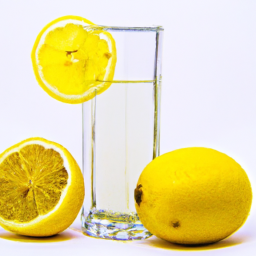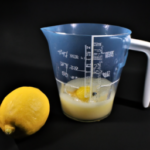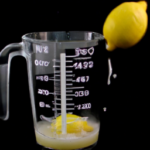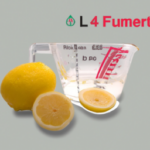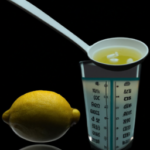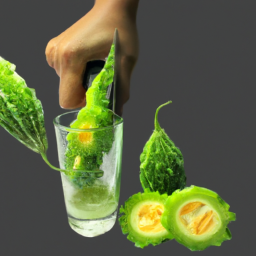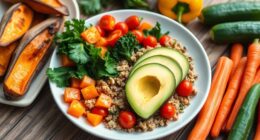Being someone who loves to cook and bake, I often find myself thinking about the precise measurements of ingredients needed. Lemon juice is one ingredient that can be particularly tricky to measure accurately.
Specifically, when a recipe calls for half a lemon’s worth of juice, how much juice should you expect to get?
To answer this question, I’ve done some research into the average amount of juice in a lemon, as well as tips for getting the most juice out of a lemon. Additionally, I’ll explore the different varieties of lemons and their flavor profiles, as well as substitutes for lemon juice and the health benefits of consuming lemons.
Whether you’re a seasoned chef or a novice cook, understanding the nuances of lemon juice measurement can make a big difference in the success of your culinary creations.
Key Takeaways
- The amount of lemon juice extracted can be affected by factors such as size, ripeness, extraction method, and temperature.
- On average, a medium-sized lemon yields about 2-3 tablespoons of juice.
- Rolling or using a citrus reamer can help extract more juice from a lemon.
- Measuring lemon juice can be done using measuring spoons, clear measuring cups, or by weight.
Understanding the Challenge
You’re probably wondering how much lemon juice you can get out of just half a lemon, right? Well, the answer is not as straightforward as you might think. It depends on a variety of factors, such as the size and ripeness of the lemon, the method used to extract the juice, and even the temperature of the fruit.
Exploring alternatives to the traditional method of squeezing the lemon by hand can also affect the amount of juice obtained. Some people swear by microwaving the lemon for a few seconds or rolling it on a hard surface before cutting it in half. However, common misconceptions about these methods and their effectiveness still exist.
It’s important to understand the science behind lemon juice extraction to get the most out of your fruit.
When it comes to the average amount of juice in a lemon, there are some general guidelines that can be helpful. But before we dive into that, let’s take a closer look at the factors that affect the amount of juice in a lemon.
The Average Amount of Juice in a Lemon
When cutting a lemon in half, you’ll notice a significant amount of liquid that can fill a small cup. The average amount of juice in a lemon can vary depending on the size and ripeness of the fruit. However, on average, a medium-sized lemon can yield about 2-3 tablespoons of juice.
Lemon juice is not only a popular ingredient in cocktails, but it also has numerous health benefits. Drinking lemon water can aid in digestion, boost the immune system, and even improve skin health. Incorporating lemon juice into your daily routine can be a simple and effective way to improve your overall health.
Moving on to estimating the amount of juice in half a lemon, there are a few methods that can be used.
Estimating the Amount of Juice in Half a Lemon
If you’re looking to add some tangy flavor to your dish or drink, a quick squeeze of this zesty citrus might just do the trick. But how much juice can you expect from half a lemon?
Here are some tips for estimating the amount of juice in half a lemon with reasonable accuracy:
-
Use a measuring spoon: A tablespoon can hold approximately 15 milliliters of liquid, which is roughly equivalent to the juice of half a lemon. However, this method can be imprecise due to variations in lemon size and juiciness.
-
Squeeze over a clear measuring cup: Squeezing the juice of half a lemon into a clear measuring cup can provide a more accurate estimate of the amount of juice produced. This method also allows you to adjust the amount of juice added to your recipe according to your taste.
-
Consider the lemon’s weight: On average, a medium-sized lemon weighs around 110 grams and yields about 40 milliliters of juice. This means that half a lemon weighs approximately 55 grams and can produce around 20 milliliters of juice.
Estimating the amount of juice in half a lemon can be a tricky task, but using measuring tools and considering the weight of the lemon can help you get a more accurate estimate. Now that you know how much juice to expect, let’s move on to some tips for getting the most juice out of a lemon.
Tips for Getting the Most Juice Out of a Lemon
To really maximize your lemon’s potential, try rolling it on a hard surface before cutting and squeezing it to release every last drop of its tangy goodness. Another great way to get the most out of your lemon is by using a citrus reamer. This tool allows you to easily extract every bit of juice from the fruit, leaving nothing behind.
If you’re looking to add some extra flavor to your dish, don’t forget about the lemon zest! The outer layer of the lemon peel contains oils that are bursting with flavor. Simply use a zester or a microplane to grate the peel and sprinkle it over your dish. Not only will it add a delicious citrus flavor, but it also provides a beautiful pop of color. With these tips, you’ll be able to make the most out of your lemons and take your cooking to the next level.
Moving on to other ways to use lemons in cooking, there are plenty of options to choose from.
Other Ways to Use Lemons in Cooking
You can elevate the flavor of your dishes by incorporating the bright and zesty taste of fresh lemons in various ways. Here are some lemon recipes and preservation methods that you can try:
-
Make a delicious salad dressing by mixing lemon juice, olive oil, honey, Dijon mustard, and salt. This is also known as a lemon vinaigrette.
-
Create a lemon curd filling with fresh lemon juice, eggs, sugar, and butter, then bake it on top of a shortbread crust to make lemon bars.
-
Cut lemons into quarters and pack them in a jar with salt, lemon juice, and spices to make preserved lemons. Leave it to ferment for a few weeks, then use the tangy lemon rind in stews, couscous, or pasta dishes.
-
Freeze lemon juice in an ice cube tray, then add it to water or cocktails for a refreshing citrus kick. This is also known as lemon ice cubes.
Incorporating lemons in your cooking not only adds flavor but also provides health benefits such as vitamin C and antioxidants. However, different lemon varieties have varying levels of acidity and sweetness, which can affect the overall taste of your dish. In the next section, we’ll explore the different lemon varieties and flavor profiles to help you choose the best one for your recipe.
Lemon Varieties and Flavor Profiles
Did you know that the type of lemon you choose can greatly impact the taste of your dish? Lemon flavor profiles vary depending on the variety of the fruit.
For example, Eureka lemons have a tart and acidic flavor, while Meyer lemons have a sweeter and less acidic taste. The Lisbon lemon falls in between these two in terms of tartness and acidity.
Understanding the flavor profiles of different lemon varieties can help you create the perfect flavor balance in your favorite lemon dishes. When it comes to popular lemon dishes, the type of lemon you choose can make all the difference.
For instance, Eureka lemons are a great choice for savory dishes like roasted chicken or grilled fish, where their tartness can be balanced by other flavors and ingredients. On the other hand, Meyer lemons are ideal for sweet dishes like lemon bars or lemon curd, where their sweetness can shine through.
By choosing the right lemon variety for your recipe, you can take your dish to the next level. Speaking of taking things to the next level, let’s talk about storing your lemons.
Storing Lemons
In order to fully enjoy the taste of lemons, it is important to store them properly. Preserving freshness and preventing spoilage are key factors to consider when storing lemons. There are different storage methods that can help prolong the life of lemons and keep them fresh for longer periods of time.
One common method is to store lemons at room temperature, away from direct sunlight and heat. Another technique is to store lemons in the refrigerator, preferably in a plastic bag to keep them from drying out. Alternatively, you can also freeze lemons by cutting them in half and placing them in a freezer bag. This is a great option if you have an abundance of lemons and want to use them later for juicing or cooking.
When it comes to storing lemons, it is important to keep in mind their perishable nature. By following these storage methods, you can ensure that your lemons stay fresh for longer and prevent unnecessary waste. Now, let’s explore some substitutes for lemon juice.
Substitutes for Lemon Juice
When I don’t have lemon juice on hand, I turn to other citrus fruits as a substitute. Lime, grapefruit, and orange juices can all be used in place of lemon juice, though their flavors may differ slightly.
Vinegars, such as apple cider or white wine vinegar, can also be used as a substitute for lemon juice in recipes. Another option is to use cream of tartar, a byproduct of winemaking that can add a tangy flavor similar to lemon juice.
Other Citrus Fruits
You’ll often find that other citrus fruits, such as oranges and grapefruits, can add a unique and tangy flavor to your dishes. These fruits are also packed with nutrients that offer a wide range of health benefits. Here are some reasons why you should incorporate more citrus fruits into your diet:
-
Lime vs grapefruit: Both limes and grapefruits are excellent sources of vitamin C, potassium, and other essential nutrients. However, grapefruits are lower in calories and higher in fiber, making them a great choice for those looking to lose weight or maintain a healthy diet.
-
Boosts immune system: Citrus fruits are well-known for their high vitamin C content, which helps boost your immune system and protect against infections and diseases.
-
Lowers risk of chronic diseases: The antioxidants found in citrus fruits can help reduce inflammation and lower your risk of chronic diseases, such as heart disease and cancer.
-
Improves digestion: The fiber found in citrus fruits can help improve digestion and prevent constipation.
Incorporating more citrus fruits into your diet is a simple way to boost your health and add flavor to your meals. Now, let’s move on to the next section where we’ll explore the benefits of using vinegars in your cooking.
Vinegars
To spice up your meals, why not try adding a splash of vinegar? Vinegars come in various types, each with its distinct flavor profile that can elevate the taste of your dishes.
If you run out of lemon juice, you can use vinegar as a substitute in some recipes, such as salad dressings, marinades, and sauces. Using vinegars in cooking is not only a great way to add flavor, but it also has health benefits.
Studies have shown that vinegar can help regulate blood sugar levels and aid in digestion. Apple cider vinegar, in particular, has been linked to weight loss and improved cholesterol levels. So next time you’re looking to add some zing to your meal, grab a bottle of vinegar and experiment with different flavors to find your perfect match.
When it comes to baking, vinegar can also be used as a leavening agent. In the next section, we’ll explore another ingredient commonly used in baking – cream of tartar.
Cream of Tartar
Cream of tartar is a powdery substance that’s chemically known as potassium bitartrate. It’s a byproduct of wine production and can be found in the baking aisle of your local grocery store.
This substance is commonly used in baking as it helps to stabilize egg whites when making meringues and angel food cakes. It’s also used as a leavening agent in some recipes.
The uses and benefits of cream of tartar go beyond the kitchen. It’s been found to have some health benefits, such as aiding in digestion and reducing joint pain. However, it should be noted that the scientific evidence supporting these claims is limited.
If you’re looking for alternatives and substitutes for cream of tartar, you can use lemon juice or vinegar in its place. These options are acidic and can help achieve similar results in baking recipes.
Lemon juice in health and wellness has been a topic of interest for many years. It’s packed with vitamin C, which is essential for a healthy immune system. Additionally, lemon juice has been found to aid in digestion, promote weight loss, and even improve skin health.
So, if you’re looking for a natural way to improve your overall health and wellness, incorporating lemon juice into your diet may be beneficial.
Lemon Juice in Health and Wellness
As someone who strives to maintain good health, I’m always interested in learning about the benefits of different foods and ingredients.
When it comes to lemon juice, there are several health and wellness benefits to consider. Lemon juice is an excellent source of vitamin C and antioxidants, which can boost immunity and protect against disease.
Additionally, lemon juice can aid in digestive health and promote healthy skin, making it a valuable addition to any diet.
Vitamin C and Antioxidants
Lemon juice is a great source of vitamin C and antioxidants, both of which are essential for maintaining a healthy immune system. Vitamin C is a powerful antioxidant that helps protect against free radicals, which can damage cells and contribute to the development of chronic diseases. Additionally, vitamin C is important for the production of collagen, a protein that supports healthy skin, bones, and connective tissue.
There are many benefits of vitamin C, and incorporating lemon juice into your diet is a great way to take advantage of them. Lemon juice can be used in a variety of recipes, from salad dressings to marinades to smoothies. Adding a squeeze of lemon juice to water can also help increase your hydration and provide a refreshing, citrus flavor.
Moving on to the next section, digestive health is also an important aspect of overall wellness.
Digestive Health
Maintaining good digestive health is crucial for overall well-being, and incorporating fiber-rich foods and probiotics into your diet can help regulate digestion and promote gut health. However, there are also other natural remedies that can aid in digestion, such as lemon water.
Drinking lemon water has been reported to help with constipation and bloating, as well as promoting hydration, which is essential for healthy digestion. The benefits of lemon water can be attributed to the high amount of vitamin C and antioxidants present in lemon juice, which can help reduce inflammation in the gut and improve the absorption of nutrients.
In addition to drinking lemon water, adding lemon juice to your meals or using it as a detox ingredient can also have positive effects on your digestive health. Lemon juice is known for its cleansing properties, which can help flush out toxins and waste from the body. The citric acid present in lemon juice can also stimulate the production of digestive juices, which can aid in digestion.
Incorporating lemon juice in your diet can be as simple as adding it to your salad dressing or using it as a marinade for your proteins. With its numerous benefits, adding lemon juice to your diet can promote a healthy gut and overall well-being.
Transitioning to the subsequent section about skin care, it’s important to note that what we put into our bodies can also affect our skin health.
Skin Care
Taking care of your skin is a piece of cake with the right products and routine. One of my favorite DIY skin care treatments is a lemon face mask.
Lemon juice is a natural source of vitamin C, an antioxidant that can improve skin texture and reduce the appearance of fine lines and wrinkles. The acid in lemon juice can also help exfoliate dead skin cells and unclog pores, leaving your skin looking brighter and clearer.
To make a simple lemon face mask, mix equal parts lemon juice and honey and apply it to your face for 10-15 minutes before rinsing off with warm water. You can also add a drop or two of lemon essential oil to your daily moisturizer for an added boost of vitamin C.
In addition to its skin care benefits, lemon essential oil has been shown to have antibacterial and antifungal properties, making it a great addition to your overall health and wellness routine.
Frequently Asked Questions
What are some alternative ways to get lemon juice besides using a fresh lemon?
I have found that lemon juice substitutes, such as bottled lemon juice or citric acid, can be used in place of fresh lemon juice. However, it’s important to note that the benefits of lemon water may be diminished with these alternatives.
Can you freeze lemon juice for later use?
Yes, lemon juice can be frozen for later use. To maintain its quality, store it in an airtight container or freezer bag, removing as much air as possible. Thaw in the refrigerator and use within 6 months.
How long can you keep lemon juice before it goes bad?
Lemon juice can last up to 2-3 days in the fridge, but to extend its shelf life, consider storing it in a glass container and adding a layer of plastic wrap. Expired juice can be used for cleaning or as a natural fertilizer.
What are some potential health benefits of consuming lemon juice?
As someone who values evidence-based information, I can confidently say that consuming lemon juice has potential detox benefits and immune-boosting properties. Research suggests that lemon juice may support liver function and enhance the body’s defenses against infection.
How can you tell if a lemon is ripe and ready to use for juicing?
As a citrus farmer, I know that the best time to pick lemons is when they are fully yellow. To check for ripeness, gently squeeze the fruit – it should give slightly and have a fragrant aroma.
Conclusion
In conclusion, the question of how much lemon juice is in half a lemon has been thoroughly explored. While the amount of juice in a lemon can vary, on average, half a lemon will yield about 1 tablespoon of juice. However, it’s important to note that there are several factors that can affect the amount of juice obtained from a lemon, such as its ripeness and the method used to extract the juice.
To maximize the amount of juice obtained from a lemon, it’s recommended to roll the lemon on a hard surface before cutting and juicing it. Additionally, using a citrus juicer or hand-held reamer can also help to extract more juice.
In cooking and baking, lemons can be used for a variety of purposes, including adding flavor to dishes and desserts, tenderizing meat, and preserving fruits and vegetables.
Overall, understanding the amount of juice in a lemon and how to effectively extract it can greatly enhance one’s culinary skills. While there are substitutes for lemon juice, such as vinegar or other citrus juices, the unique flavor profile of lemons makes them a valuable ingredient in any kitchen.
So, the next time you encounter a lemon, remember to roll it, juice it, and savor its tart, refreshing taste.
Ilana has been a vegan for over 10 years. She originally made the switch for health reasons, but soon found herself becoming more and more passionate about the ethical and environmental implications of a vegan lifestyle. Ilana is the author of The Graceful Kitchen, a blog all about veganism. She loves to cook up delicious and nutritious vegan meals, and share her recipes with others who are interested in leading a cruelty-free life. Ilana is also a strong advocate for using whole foods as the foundation of a healthy diet, and believes that going vegan is one of the best ways to achieve this.

